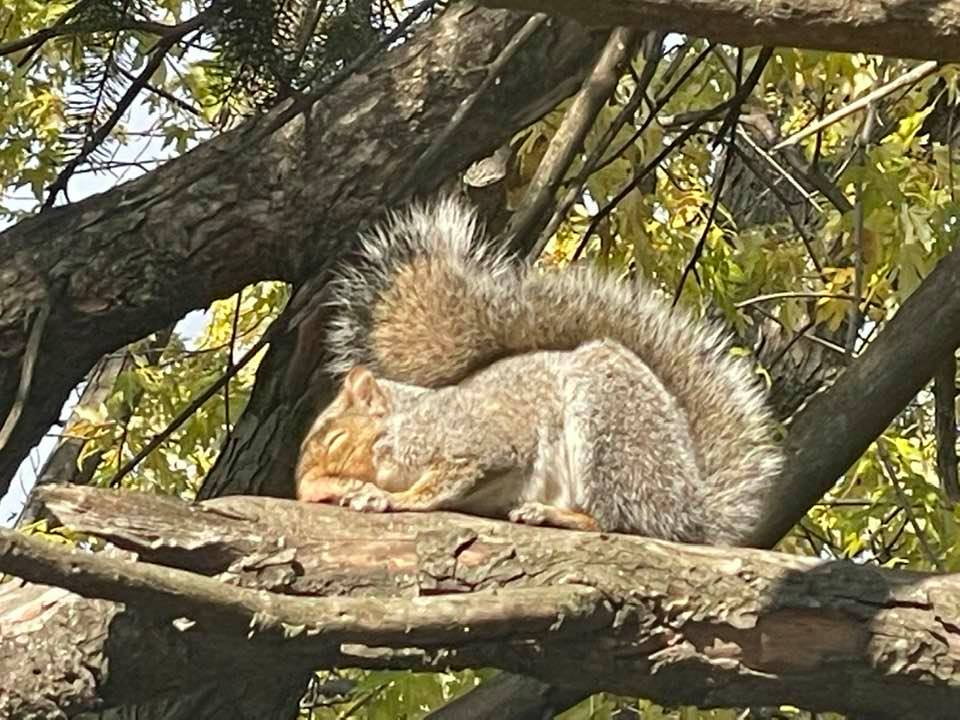NOVEMBER 9, 2021 – As squirrels prepare for winter, fall is when they act most . . . squirrelly. Late the other day, however, while strolling down our alley, I caught a squirrel napping conspicuously on a tree limb barely 10 feet off the ground. Perhaps, I thought, the squirrel was resting after a hard day robbing bird feeders. Before we malign reflexively these bright-eyed, bushy-tailed rodents, we should remember that before they resort to sunflower seed take-out, they perform a critical role in the acorn-squirrel-oak tree-regeneration cycle: much of a squirrel’s buried loot is forgotten.
Besides, how can we fault critters as clever as squirrels? Given all the ineffectual, anti-squirrel devices invented and installed by bird-lovers here’s a creature that invariably outsmarts humans. Some humans, however, are smarter than others and recognize that squirrels are the smarter species.
I remember Don and Adie, an elderly couple two doors down. (I say “elderly.” At the time pertinent here, they were younger than my wife and I are now.) Don was an engineer, and Adie was every bit his intellectual equal. In their retirement they opened a high-end bird-seed restaurant in their backyard, and for a while it attracted all the avian aristocrats in our neighborhood. But then the squirrels discovered it, and despite all the clever collars, distractions, and diversionary devices that Don designed and installed, the “damn squirrels” (Adies’s words) found a way to steal from the restaurant. Don and Addie surrendered and turned their upper-crust bird-feeder into a take-out for squirrels. As I said, Don and Addie were of superior human intelligence.
I learned recently that in addition to being smarter than humans, squirrels are engineered in a manner that allows them to act so squirrelly. Their ankles have swivel joints that turn 180 degrees. This feature allows squirrels to sprint down a tree trunk as fast as they can scramble up. If housecats had evolved so far, generations of fire-fighters could’ve put out more fires . . . or gotten more sleep.
And unlike humans, whose ears keep growing (a fact that doesn’t seem to compensate for hearing loss, given the brisk sales of hearing aids among older folks), squirrels keep growing—and using—their teeth.
When our European daughter-in-law moved to America, she soon became fascinated by squirrels. She claims that they weren’t to be seen back in France or ancestral Portugal. We believe her, even though the squirrel’s territory is . . . the entire world except Australia and Antarctica.
In any event, being of superior intelligence (compared to other humans), our daughter-in-law admires squirrels. Last June, she and our son Byron bought a home in Chester, CT, a small, quiet New England town on the Connecticut River up-river a short way from Long Island Sound. My wife and I visited last July. As we entered Chester we caught sight of the handsome, wooden sign announcing the settlement. At the top of the sign was the town mascot—a squirrel!
If anyone would say, “Only in America.” it’s our daughter-in-law.
(Remember to subscribe to this blog and receive notifications of new posts by email.)
© 2021 by Eric Nilsson
